Kirimetiyawatte, abbreviated to Kirimetiya, and even further and affectionately so to Kiri, is a remote village high in the mountains of the central province of Sri Lanka. Whilst only about an hour’s drive from the country’s cultural capital of Kandy, the 4km dirt track leading to the village makes it unreachable during and after heavy rainfall.
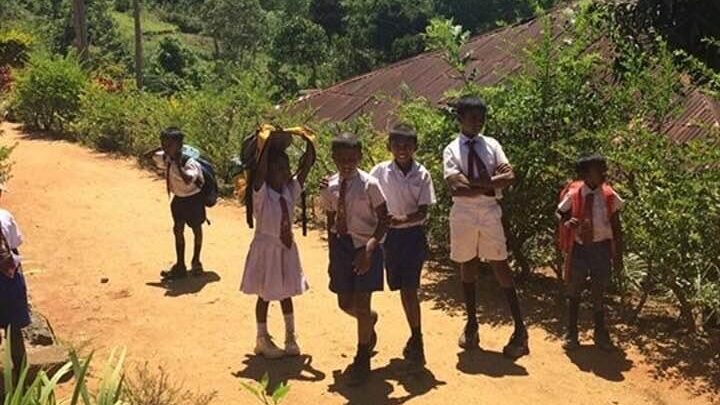
Background
Kirimetiya, as with many villages in central Sri Lanka, was once a thriving tea estate with many Tamil families having migrated from southern India from the mid to late 1800s to work on the plantations. Between the 1970s and 1990s the Sri Lankan government nationalised privately-owned estates occupied and controlled by British companies or families. For a range of complex reasons, the politicisation of the tea industry resulted in many estates and factories closing which left many villages who relied on tea picking and other estate work destitute. Kirimitiya is just one of those villages. Check out the evolution of Sri Lanka’s plantation sector for more on the politics of nationalisation of the tea estates and the BBC link to discover the 150 year story of Sri Lankan tea production.
Following the Kirimietiya tea estate closure, the village people invariably had to resort to rearing animals or unskilled labour to survive. Some women left to take up migrant jobs in the Middle East and sent their earnings back to their families. This still happens and leaves the children all too often unprotected and exposed to many forms of risk.
There are 80 families (346 people) living in Kirimetiya and 133 of them are children. Those aged 7-14 attend the village secondary school but for them to progress to a high school offering GCSEs they must walk 4km and then take a bus for a further 7km. Admission is based on success at an entrance test. Some apply from Kiri, most fail. Even when accepted, the arduous journey and travel costs to and fro each day are so prohibitive they invariably drop out. No child from Kiri has yet made it to university.
First visit 2016
I first visited Kirimetiya in 2016 whilst volunteering with Women’s Development Centre (WDC) along with my then 13 year old son, Joe. At that time a joint intervention project was in its embryonic stages with WDC and Shining Life Children’s Trust (SLCT), an English charity which I initially volunteered with back in 2013. SLCT was funding an initial six month project to assess the underlying needs of the village. Following this it was agreed that WDC, with the financial support of SLCT, would work together to make a significant and lasting difference to the community over a two year funded period. There were a raft of serious concerns that needed to be addressed with the top three being:
- Education – lack of any pre-school education resulting in young children being under-stimulated and spending too long in poverty-stricken and sometimes abusive living conditions. Education effectively ceasing for almost all children at aged 14.
- Leadership – lack of community leadership and very limited access to government services resulting in little progress in improving the community’s living standards.
- Health – poor health and hygiene standards and a lack of awareness of nutritional needs resulting in poor health, regular disease and a vicious cycle of poverty.


First trip to Kirimetiya (2016) – Joe playing cricket and football with the school children, and me with WDC’s Coordinator, Chandrathilika, and WDC field worker, Hudson, who were visiting Kiri to see how they could best build capacity and empower the villagers
Once SLCT committed to fund the project, WDC deployed members of their team to begin mobilising Kirimetiya. WDC’s motto is ‘intervention, prevention and advocacy’ and that is what they did.
The housing for most residents of Kiri is in the form of line houses built by the British when they occupied the tea estates in the early 1900s. They were built for the tea plantation workers of the time but these buildings have changed little since then. They are now corporation owned and still have poor access to water and sanitation and in many cases extended families must share a 10′ x 12′ room. The one room they live in is dark, and usually without windows or ventilation. Most homes only have electricity for a few hours each day and some none at all. Most daily tasks such as washing clothes or bathing are carried out in the local lake and the drainage system is ineffective.
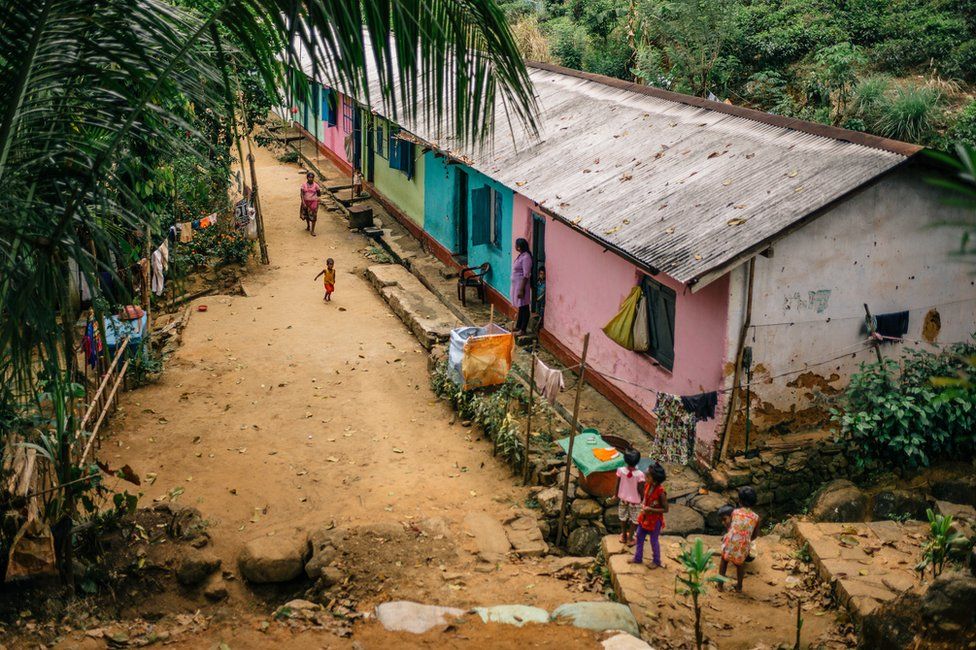
Second visit 2017
From the project’s inception to our second visit to Kirimetiya the following year, much had been achieved:
- Education – pre-school opened in a building adjacent to the kovil where most of the village children attend daily
- Leadership – women’s societies and self-help groups established helping to combat domestic violence and child abuse
- Health – district nurse attends the village to educate villagers on nutrition, hygiene, immunisation and check babies’ health and weight
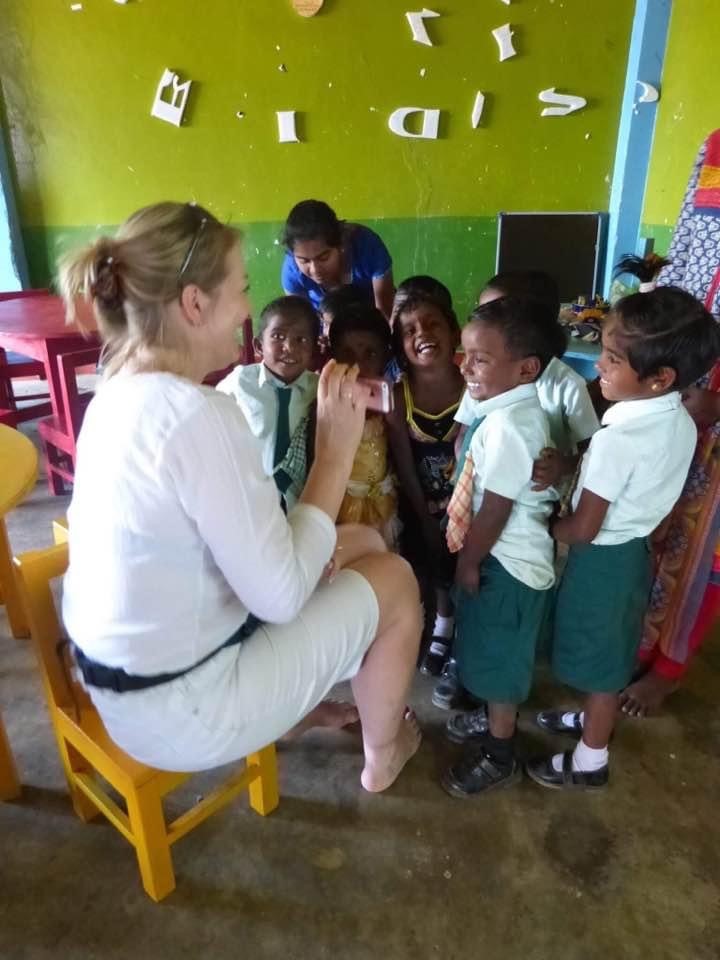
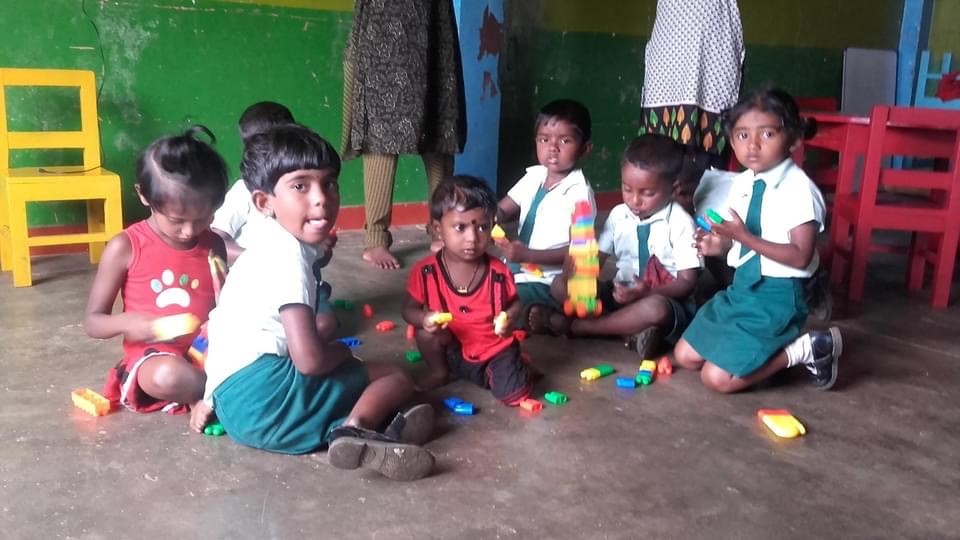
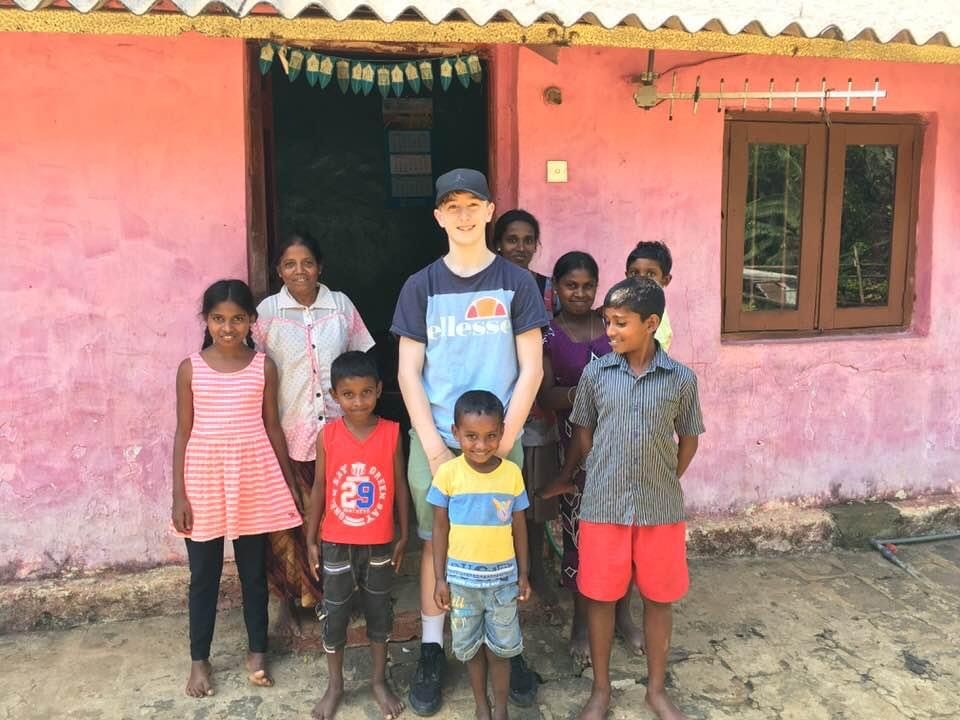
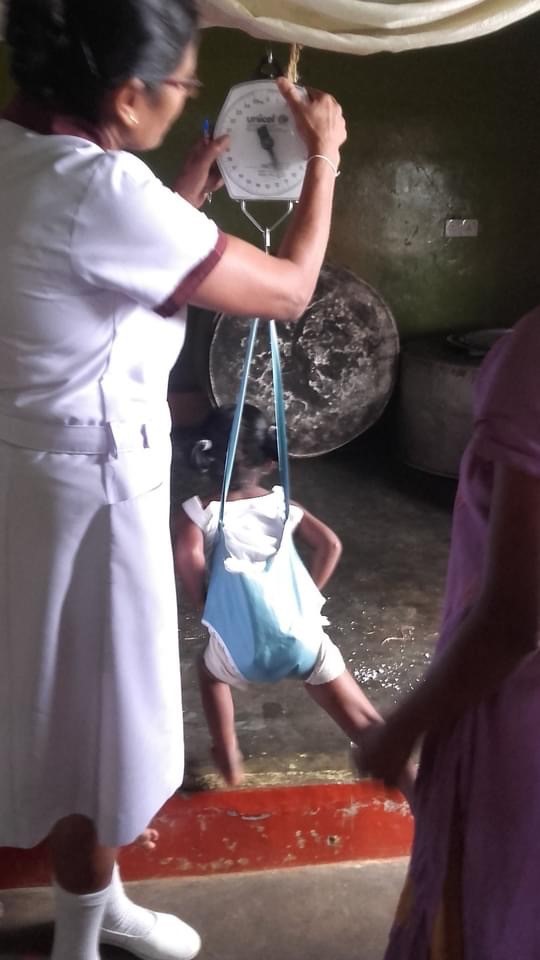
It was amazing to see the progress being made and the positive impact it was having on the villagers. Instead of seeing the pre-school children inside their tiny line houses, they were instead learning and playing at their pre-school. They had purpose and looked happy.
Two village girls who were supervising the pre-school children were about to attend a basic teacher trainer course in Kandy. They had been identified as being keen to learn new skills so they could implement them back in the village to improve the lives and life chances of the children. Educate a woman, educate a community and a generation!
Third visit 2018
Between our second and third visit, women’s support groups had been well-established and micro finance schemes had been set up for families to borrow money for entrepreneurial activities.




Main picture is outside the pre-school and others at the secondary school. Sally (Field Director for SLCT), Shiyamala, WDC field officer, and me handing over equipment donated from friends in the UK
2018 was our last visit as we couldn’t get out there in 2019 due to the Easter terrorist attacks across Sri Lanka. And of course in 2020 the pandemic stopped us and we had to cancel our pre-booked flights. However, much more has been achieved since then and whilst support is very much still needed, the wheels are now well in motion and the capacity to make further significant progress is good.
- Education – new pre-school building built including a library and now functioning. Two girls from the village have completed their initial teaching qualification and are teaching full time at the pre-school. Educate a woman, educate a community and a generation!
- Leadership – women’s societies and self-help groups have been strengthened with some women setting up entrepreneurial activities rather than leaving the village to gain work in the city or overseas.
- Health – village clean up projects introduced and more villagers are deploying basic hygiene and nutrition skills.

The new pre-school and library that opened in 2020 despite the lockdown restrictions
Whilst the two year SLCT funded project has ended with significant progress made, much more is needed to fully mobilise and empower the community. The next steps will focus on:
- Education – build technological capacity so that children are able to learn remotely online and develop additional educational resources.
- build a strong sports programme for children to develop their skills, increase their enjoyment, and harness the community through sporting events.
- Leadership – strengthen women’s support groups through skills development to further empower them and their families.
- through the established women’s societies expand women’s entrepreneurial activities
- Health – lobby government bodies to improve the village drainage system and the main track out of the village. This will support with health and hygiene and bring about easier access to post-14 education.
- Build on the hygiene and nutrition skills development programme already underway.
How can you help if you feel inspired to?
- In the comments section below, register your interest to volunteer your skills/time in Sri Lanka to support an initiative which matches you skill set.
- Donate any amount (just a little goes a long way in Sri Lanka) which will go to support initiatives in Kirimetiya. If you do this please put (KIRIMETIYA) in the Virgin money giving message box and I’ll make sure every penny/rupee goes there. Justgiving
- Sponsor a Kirimetiya girl’s post 14 education, and watch her develop through termly updates on her progress.
- Donate a redundant but working laptop for the secondary school and library.
- Offer to teach/share a skill that you have, over zoom/skype.
- Donate babies/children’s clothes for me to take out there as soon as we’re allowed.
Last blog: Looms and Zooms – how well the girls at the refuge have learnt to weave and what happens next
Next up: Kirmetiya gets connected
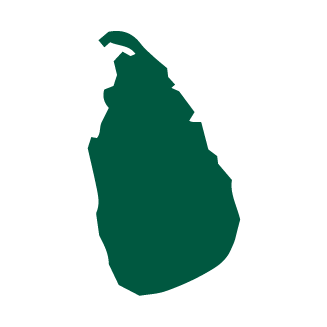
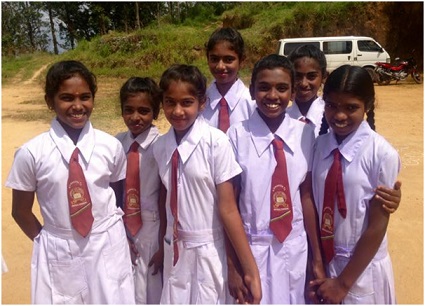
[…] The magic multiplier – educate a woman, educate a community and a generation – from an almost fo… […]
What an uplifting story! It’s fantastic to read about these dramatic improvements to community life, education and health! A huge achievement for all involved. Thanks for sharing Marcia.
Xx
Excellent elaberation of the community mobilisation project implemented with the support of SLCT and Marcia Summers. She as a out side person would be able to see the changes. we as WDC needs to see more progress untill these communities are sustain and motivated to live in a dignified life. Thank you every one who have contributed for this success ??
Xx